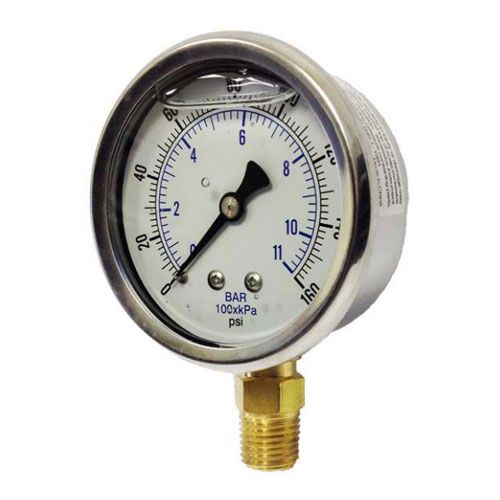A pressure gauge out of calibration can be extremely frustrating. The gauge may constantly point off of zero when there’s no pressure in the line or the gauge is consistently reading 5% above or below the range it really should be reading based on your other instrumentation.
One solution to this problem is to utilize the adjustable pointer on the pressure gauge assuming your gauge has one.
Most industrial pressure gauges will have an adjustable pointer because gauges will commonly fall out of calibration out in the field due to vibration, pulses, or just general use. Gauges that don’t typically have them are smaller utility pressure gauges or liquid filled gauges. Usually they’re lower in cost and its cheaper just to replace than try and worry about adjustments.
Below is a link to a video by our friends at Kodiak Controls explaining how to adjust the calibration of a pressure gauge using an adjustable pointer. Keep in mind that an adjustable pointer can only help if the needle is off by 1-10% of the full range. So, if you have a 100 psi gauge and the needle is always off by 3 psi, an adjustable pointer will work great. But, if your 100 psi gauge is off by 30 psi, an adjustable pointer is not your solution. There is a bigger issue at hand and you may need to purchase a new pressure gauge. Enjoy the video!

 On high vibration industrial applications, reading a pressure gauge can often be frustrating or in some cases down right impossible without the proper configuration on the gauge. Very often, the end user may experience:
On high vibration industrial applications, reading a pressure gauge can often be frustrating or in some cases down right impossible without the proper configuration on the gauge. Very often, the end user may experience:
 PROCESS CONTROL & MEASUREMENT SOLUTION EXPERTS
PROCESS CONTROL & MEASUREMENT SOLUTION EXPERTS